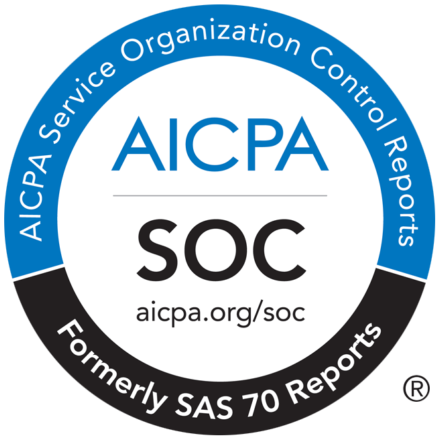Breaching of university or college policies is academic misconduct. It can be broadly explained as an action which helps or attempts one to gain or helps others to gain or attempt to gain unfair academic advantage. You are accused of academic misconduct if you commit contract cheating, collusion, plagiarism or fabrication of data. Students are required to conform with the rules of behavior, especially prohibiting academic misconduct.
Types of Academic Misconduct You Should Know to Avoid Them
Plagiarism
Plagiarism is considered more than “copying” or “using” others’ ideas, concept, thoughts and writing. It includes stealing and misrepresenting others’ ideas and writing as one’s own. In educational institutions, especially universities, any member, whether senior or junior, who has to undergo scholarly work are required to uphold intellectual honesty, as well as transparency, as being institutional or academic community members.
Therefore, the authors of journals, research papers and articles should be given due respect, and if there is any contract cheating, falsifying data, poor scholarship, misconduct, or lack of citation and referencing affecting the completion of the learning process, it is regarded unethical, and can lead to serious consequences in future.
Plagiarism is a key aspect of academic dishonesty for in an educational institution, one should not only know how to use other scholars’ work but also cite it appropriately to not to let you down or undermine the basic principles of scholarly discourse.
How to Avoid Plagiarism in Academic Papers?
Academic papers such as research journals ask for original work by students or scholars. Reading related papers online may cause altering or copying the given idea or opinion, without giving proper citations or references. Plagiarism in academic work may be in any forms such as paraphrasing, self-plagiarism, mosaic plagiarism and direct plagiarism. A reliable plagiarism detector can help you avoid duplicate content in your writing.
The latest online plagiarism checkers are equipped with artificial intelligence (AI) and machine learning (ML) technology to give you accurate results after comparing with billions of resources online The plagiarism scanner is designed to suit any file format like pdf, ppt, docx, excel, and more. You can access the software through your mobile or laptop and compare multiple files or two documents side by side and in multiple languages.
- Cheating
Cheating involves using someone’s work, information, writing, materials, practices or devices in carrying out academic activities. For instance, stealing and using others’ work and submitting it as your work is an unauthorized practice. The other examples of cheating include unauthorized use of notes and textbooks during a test, giving your materials to another student to copy during the test or while doing individual activity, etc.
- Misrepresentation
This act is done to gain academic advantage, and with an intention to deceive the teacher or lecturer. It includes lying to your teacher to get higher grades. Misrepresentation is also intentionally using the words from the original source and justifying as they are your own.
- Self-Plagiarism
A student may engage in academic dishonesty by reusing or republishing his or her own work, which was submitted earlier. Self-plagiarism is committed when the entire work or certain parts of it are reused while writing a new assignment or research paper.
- Collusion
This involves a few students working together in a misleading way on an assignment, which is meant to be done by a student on his/her own. The work submitted by the students will have the same solution or answer though it may be shown different by using varied sentence structures or paraphrasing. Collusion is a type of cheating, in which the given task is worked together and submitted; instead of doing it by oneself.
- Duplicate Submission
When a student uses the same research paper or assignment to submit in two different classes, without the teachers’ permission, it results in duplicate submission. It hardly matters whether the student submits the paper in two different semesters. He or She should get the permission of both the teachers in either semester.
- Distributing Author or Faculty Intellectual Property
Any act of distributing faculty or author intellectual property, without the permission of a teacher or an author is considered academic misconduct.
What Are the Consequences of Academic Misconduct?
Academic misconduct can lead to official sanctions imposed by educational institutions. Apart from this, the other consequences are related to social, moral, ethical and academic concerns.
Social Consequences
It is observed that cheating can have a bad impact on a student’s integrity and hard work. Students who often cheat in academic activities will develop a habit of cheating later in life. This attitude will continue even in the family or social life and at work, which will affect everyone connected with them.
Wrong Evaluations
Most students of higher education find the submission of academic papers without plagiarized content quite challenging. They engage in copying deliberately or mechanically for the Internet has everything you search for everywhere. Borrowing others’ ideas may sometimes become unavoidable; nevertheless, if you miss giving appropriate citations and referencing, it will result in cheating or plagiarizing. If the marker or instructor fails to run a plagiarism test using a free online plagiarism detector, he or she cannot evaluate the student’s skills, performance, knowledge or applications accurately and will make a mistake of giving credentials to a wrong person, which in turn will have serious consequences at the workplace.
Legal Consequences
Students who are involved in live projects granted by business organizations and government agencies are supposed to submit projects on their own. Any sort of plagiarism, fabrication of data, cheating or falsification can lead to sponsors cancelling the projects and taking legal actions such as lawsuits, fines and penalties against the educational institution.
Whether you are a student, teacher or instructor, you can avoid academic misconduct to a great extent by having any academic paper checked by anti-plagiarism software for any duplicate content. It thoroughly checks for any similarity and paraphrased content and informs you by giving a detailed report.

